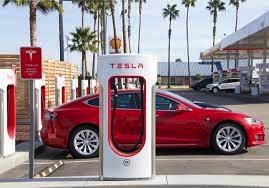 The domestic ethanol industry is now regarded as mature with an output of approximately one million barrels per day from slightly under 200 operational plants operating at between 85 and 95 percent capacity depending on demand. Accordingly, to expand, the industry must either increase exports or raise the blend rate in gasoline. Attempts to increase from 10 percent to 15 percent addition are ongoing but with logistic restraints relating to the number of eligible vehicles and dispensing of fuel at filling stations. Exports currently represent approximately ten percent of current production.
The domestic ethanol industry is now regarded as mature with an output of approximately one million barrels per day from slightly under 200 operational plants operating at between 85 and 95 percent capacity depending on demand. Accordingly, to expand, the industry must either increase exports or raise the blend rate in gasoline. Attempts to increase from 10 percent to 15 percent addition are ongoing but with logistic restraints relating to the number of eligible vehicles and dispensing of fuel at filling stations. Exports currently represent approximately ten percent of current production.
The advent of electric vehicles represents a real long-term threat to the ethanol industry. Currently, five percent of all new vehicles sold in the U.S. are powered by electricity compared to 15 percent in the E.U. and China. Despite the promotion of electric vehicle technology, there are numerous restraints to adoption with a high proportion of motorists currently intending to purchase a vehicle expressing their disinclination to switch from gasoline power. Incompatibility among charging stations, limited access and the time required to recharge generally dictate overnight slow-rate charging in privately owned, suitably equipped garages in privately-owned homes. A recent projection, presumably funded by the Renewable Fuel Association, suggests that the short-term effect of adoption of EVs would be minimal with a calculated three percent decline in diversion of corn to ethanol by 2035. This figure is based on questionable assumptions with many poorly defined variables and represents wishful thinking.
For the 2022 harvest, corn required for ethanol and by-products attained 34.7 percent (5,250 million bushels) of a total harvest of 13,730 million bushels. The ethanol industry is apparently depending on an increase in exports to prevent a further decline in the rate of diversion of corn from food to fuel. Exports will require transport from the Midwest where most of the ethanol plants are located, to East Coast ports. Since ethanol is incompatible with existing pipelines consignments will compete with other rail freight and may well overburden the transport system. The alternative is to establish ethanol refineries on the lower reaches of the Mississippi allowing barge transport of ethanol downstream with export from terminals that will have to be erected. Given the rapid growth in adoption of EVs in the E.U. and Asia, long-term export of ethanol appears to be a speculative aspiration.
increase in exports to prevent a further decline in the rate of diversion of corn from food to fuel. Exports will require transport from the Midwest where most of the ethanol plants are located, to East Coast ports. Since ethanol is incompatible with existing pipelines consignments will compete with other rail freight and may well overburden the transport system. The alternative is to establish ethanol refineries on the lower reaches of the Mississippi allowing barge transport of ethanol downstream with export from terminals that will have to be erected. Given the rapid growth in adoption of EVs in the E.U. and Asia, long-term export of ethanol appears to be a speculative aspiration.